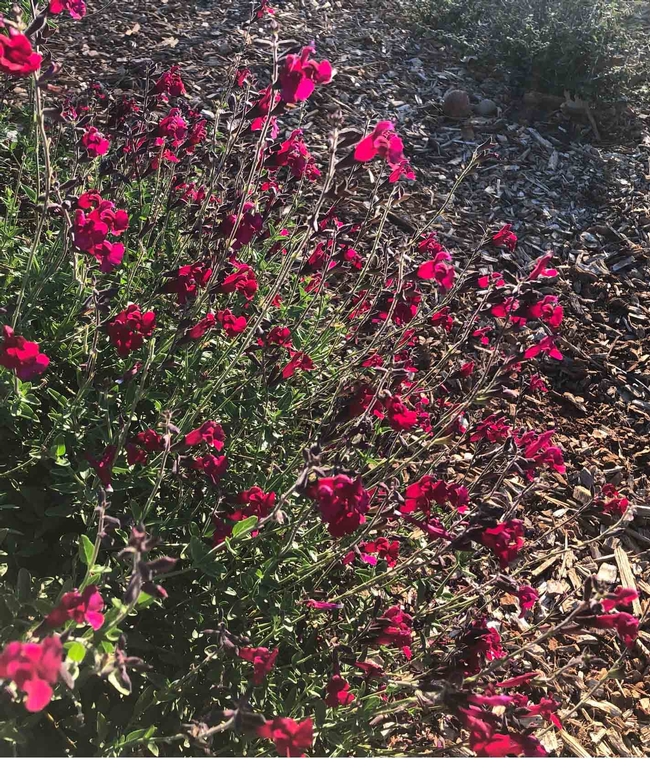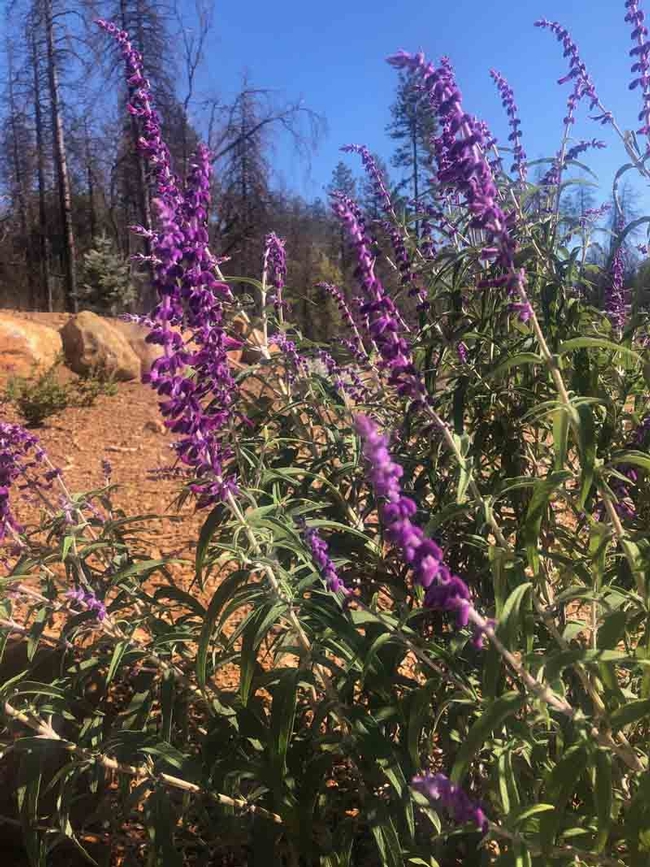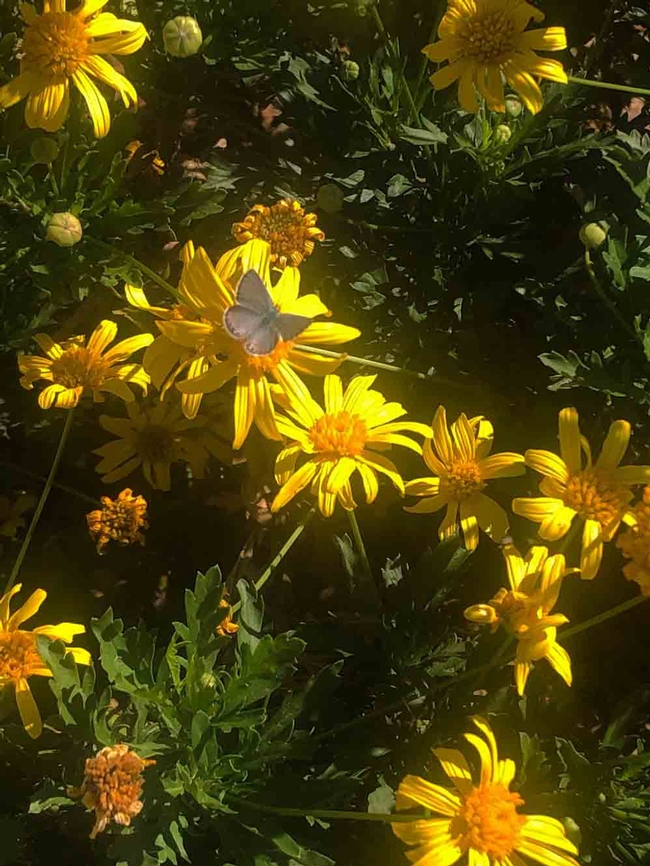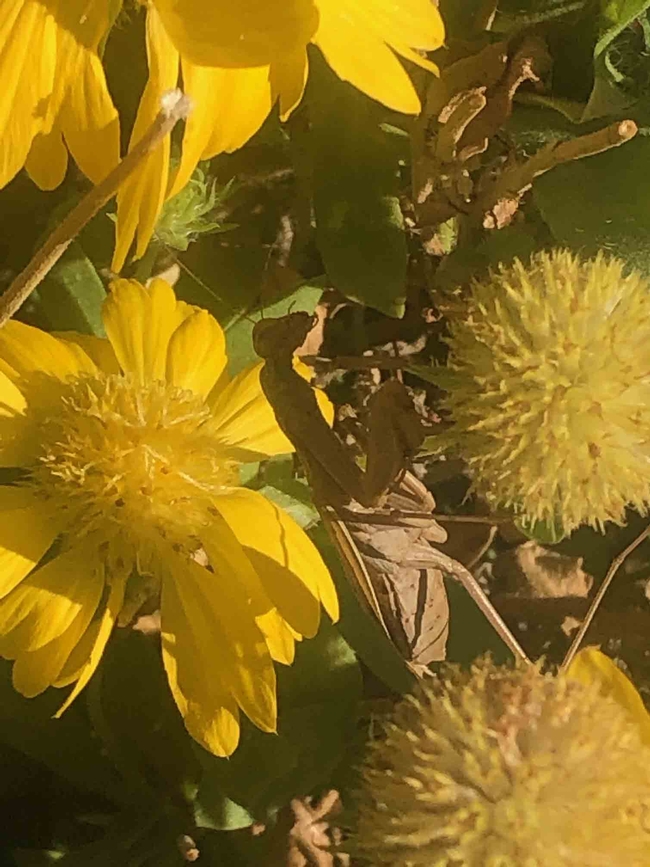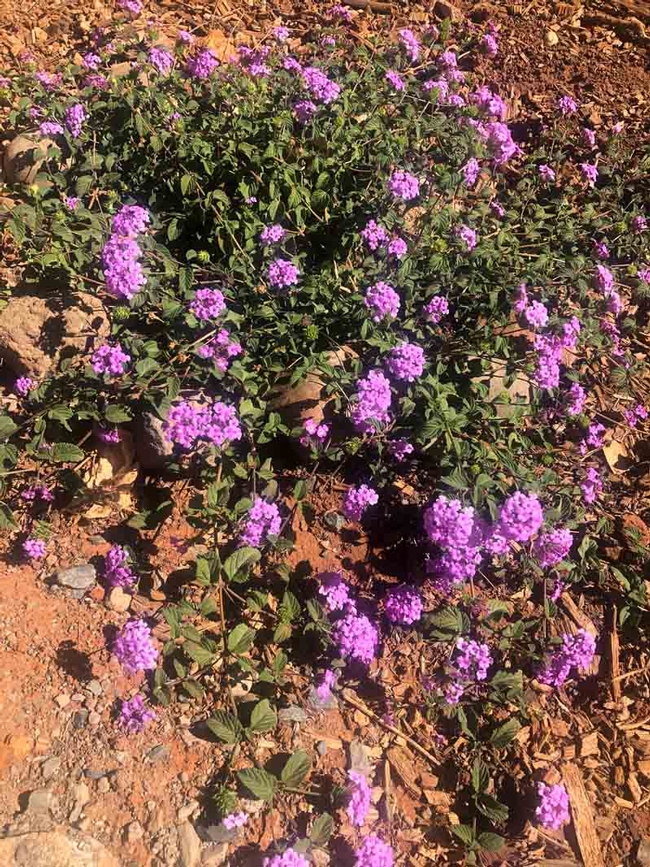It has been two years since the Camp Fire destroyed most of the foothill community of Paradise. In the years since, residents have been steadily returning to reclaim their town. As of November 1, 2020, four hundred and twenty-six homes have been rebuilt, according to the Town of Paradise building department. These range from small manufactured houses and modular dwelling units to large custom-built homes. My husband and I have been among the pioneers in this process.
Salvia greggii, Ellen Michels
Salvia leucantha, Ellen Michels
What else can returnees plant that will do well in this changed environment? We moved into our rebuilt home in April 2020 and have spent the past six months landscaping and replanting our yard. For those like us in Paradise and other fire-ravaged areas, there are three important characteristics to keep in mind when deciding what plants to add to a newly sunny yard.
1) the plants should be drought tolerant. California has seen a lot of drought in recent years, and that situation is not likely to change.
2) the plants need to be deer resistant. While deer are not nearly as numerous as they were before the Camp Fire, they still come through the area regularly. Unless your property is surrounded by a high fence, deer will treat your yard like a salad bar. Although deer will eat anything if they are hungry enough, some plants, such as those with strong smells or furry leaves, are less likely to be eaten.
3) it's a bonus if the plants attract pollinators to your property. After the devastated moonscape left by the Camp Fire, we all want to see LIFE in our yards, and plants that attract birds, bees, and butterflies create a beautiful garden full of life.
Plants that meet all three criteria are winners, and there are lots to choose from!
Blanketflower with praying mantis, Ellen Michels
Salvias are not the only plants that meet the criteria of being drought tolerant, deer-resistant, and pollinator attracting. To fill in the spaces between salvias, try planting “Walkers Low” catmint, a low mounding shrub with light blue flowers. These plants bloom and look good for months, with very little care. If you like warm-colored flowers, add in some Euryops (African bush daisy), a shrub with yellow daisy-like flowers. These too are prodigious bloomers that add color to the landscape. Another option for color is gaillardia (blanketflower). These perennials will bloom all season long.
For groundcover, consider trailing lantana (Lantana sellowiana). Lantana flowers come in a variety of colors and the plants are covered with masses of flowers nearly year-round. Deer don't normally eat any of these plants, bees and butterflies love them, and all are drought-tolerant once established. The weather is finally cooling down and this is the perfect time of year for Paradise residents to plant some of these sun-loving perennials in their new gardens. The cooler temperatures and soon-to-come rains will help these plants get established, and we will all be rewarded next spring as Paradise comes back to life once again.
For more plants that do well in our environment see the Butte County All-Star plant list on our website. These are plants that are suited to our climate here in Butte County, are drought tolerant, and attract beneficial wildlife. For an extensive list of deer resistant plants, see the list compiled by the UCCE Master Gardener Program of El Dorado County.
UC Master Gardeners of Butte County are part of the University of California Cooperative Extension (UCCE) system. To learn more about us and our upcoming events, and for help with gardening in our area, visit our website. If you have a gardening question or problem, email the Hotline at mgbutte@ucanr.edu (preferred) or call (530) 538-7201.
